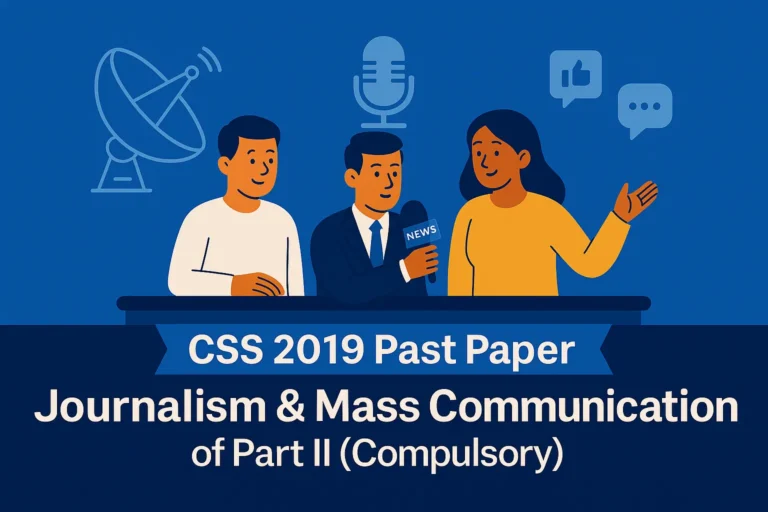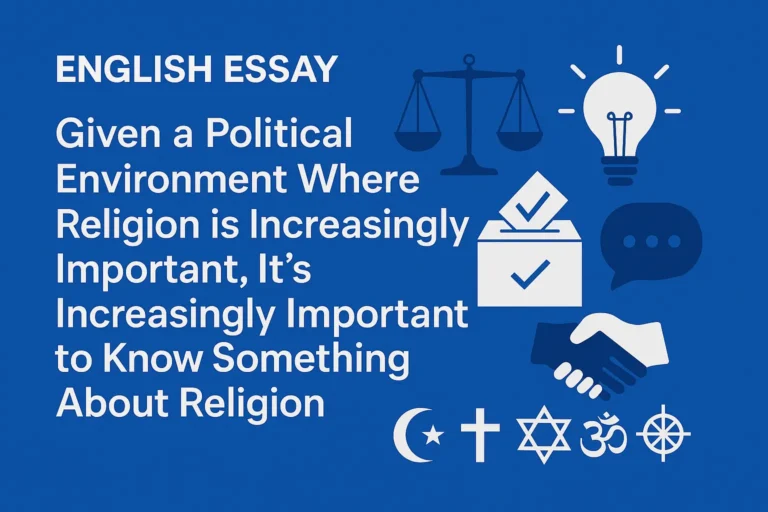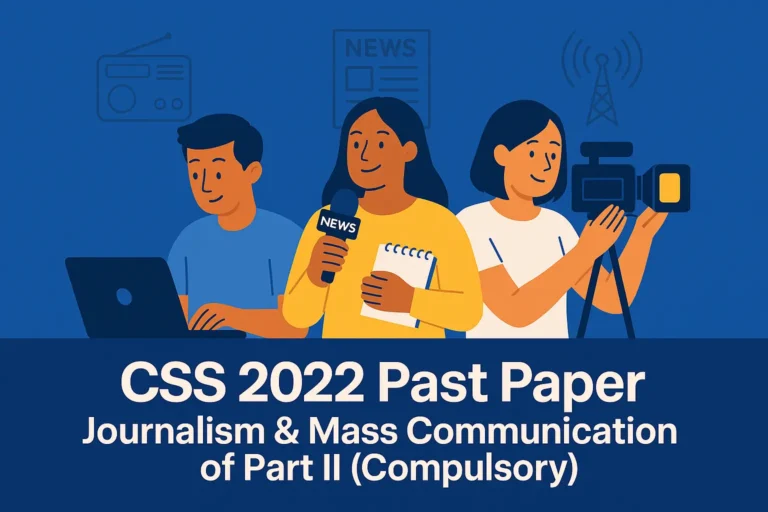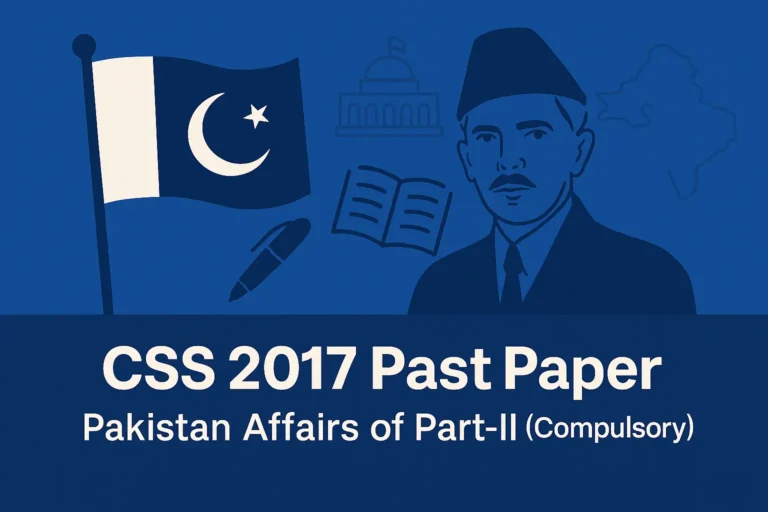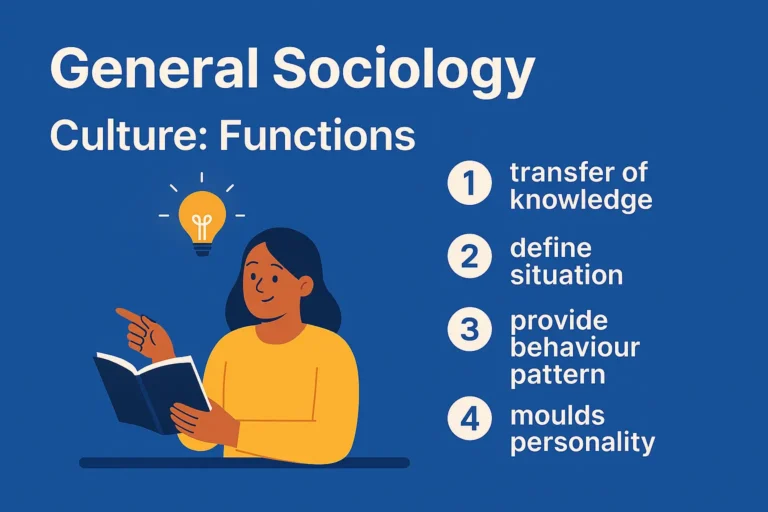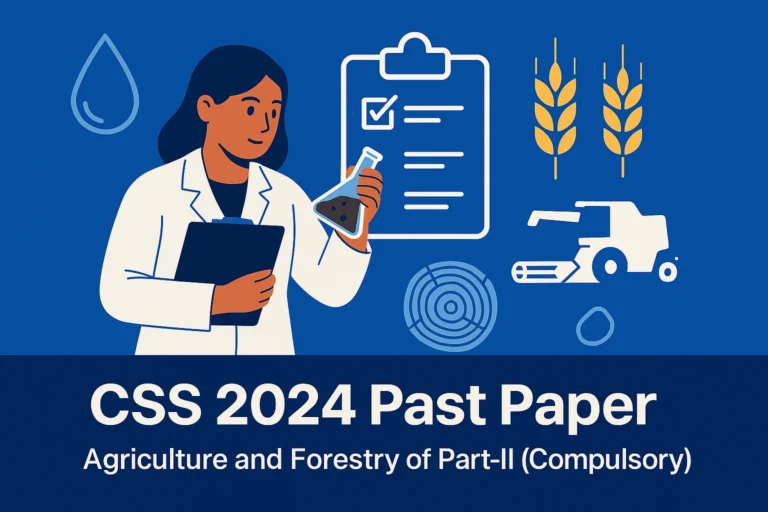CSS 2016 Solved Past Paper – Pakistan Affairs Part-II (Compulsory)
Below is the solution to PART-II (COMPULSORY) of the CSS 2016 Pakistan Affairs Paper.
Question 2
Give an account of the life and services of Shah Waliullah. How did he save the Indian Muslims from political annihilation and religious degeneration?
Introduction
Shah Waliullah Dehlavi (1703–1762) left a big mark on Muslim India. His impact is profound, particularly in the realms of philosophy and religion. He lived during a time of great decline. Politics got weaker after Aurangzeb Alamgir died. Faith and society were also falling apart. In the middle of all that chaos, Shah Waliullah had a job to do. He called it Tajdid (revival) and Islah (reform). He didn’t just work on theology. It was a larger plan. He wanted to protect Muslims from two threats: the end of politics and the decline of their faith.
I. Life and Services of Shah Waliullah
- Early Life and Education: The child who called himself a genius grew up in an academic family in Phulat, Muzaffarnagar. He was lucky enough to study with his father, Hujjat ibn Abdur Rahim, who was a well-known scholar and one of the main founders of the Rahimiyah Madrassa. He also took part in the legal Waqf compilations and co-wrote the well-known legal collection Fatawa-i-Alamgiri.
- Pilgrimage and Spiritual Enlightenment: He went to Hijaz to do the Hajj in 1730, and it looks like he changed a lot. While in the holy cities of Mecca and Medina, he was lucky to meet great religious leaders. He also had supernatural events that were for him, a milestone that solidified his conviction about his purpose in life, which he believed was to change the socio-civilisational architecture of the Muslims in India.
- Literary and Intellectual Services: His most enduring service was his prolific literary output, which provided a new intellectual foundation for Indian Muslims.
- Translation of the Quran: He remains the first to elegantly translate the Holy Quran into Persian, a language held by the eminent and scholarly class in the realm of India, to internationalise Islam. It made the divine message accessible to the masses, breaking the monopoly of the clergy and fostering a direct connection with the scripture.
- Comprehensive Writings: He authored over 50 books on various Islamic sciences. The Conclusive Argument of God, the Hujjatullah al-Baligha, is, in addition to the Izalat al Khafa, which represents a pattern of reconstructive thought in Islam. There is also a deficiency of creative thought on the Islamic socio–economic and political matters.
- Socio-Political Reforms: He also talked about the main problems that Muslims have. The biggest problems were divisions between sects and people unthinkingly following old ways of thinking. He called for Ijtihad, which means independent legal reasoning, to fix this. He also pushed for blending ideas from different schools of law. His goal was unity and a way to face the challenges of his own time.
II. Saving Muslims from Political Annihilation and Religious Degeneration
- Addressing Religious Degeneration: The Muslim community was riddled with internal conflicts, syncretic practices, and a rigid, stagnant religious scholarship. Shah Waliullah’s reform movement directly countered this:
- Emphasis on Tauheed (Monotheism): He recentered Islamic faith on the pure concept of God’s oneness, combating practices bordering on shirk (polytheism).
- Promotion of Ijtihad: By encouraging critical thinking and a return to the primary sources (Quran and Sunnah), he revitalised Islamic jurisprudence, making it dynamic and relevant.
- Social Justice: His works emphasised economic justice, condemning the concentration of wealth and advocating for a fair distribution of resources, which addressed the societal inequalities causing moral decay.
- Saving from Political Annihilation: Following the collapse of central Mughal authority, the Muslim community was vulnerable to attacks from within (Marathas, Jats, Sikhs) and the rising British East India Company. Shah Waliullah recognised that spiritual revival was incomplete without political stability.
- The Invitation to Ahmad Shah Abdali: His most decisive political intervention was his famous letter to the Afghan ruler, Ahmad Shah Abdali, urging him to invade India and crush the rising Maratha power, which threatened to erase Muslim political identity. It resulted in the Third Battle of Panipat (1761), where the Maratha confederacy suffered a crushing defeat. This battle, the result of his ideological cry, offered Muslims in India respite from immediate political annihilation.
- Political Thought: His writings inspired Islamic leaders of the next generations, laying the foundations for a revived Islamic state centred around justice.
Conclusion
Shah Waliullah was a mystic, theorist, and the first visionary reformer. The first step in his vision was religious reform. He translated the Quran in a way that freed people from deep ignorance. Through his writings, he lifted the community out of mental poverty. With his political skill, he also shielded them from physical ruin. His focus was always on reform movements, not on the later struggle for Pakistan. Because of this, many see him as the true spiritual father of modern Muslim India.
Question 3
The Aligarh Movement was a pure educational venture, but it had a deep impacts on Indian politics. Discuss.
Introduction
Sir Syed Ahmad Khan (1817–1898) was a practical visionary. He led the Aligarh Movement with the stated goal of uplifting the declining Muslim community after 1857. On the surface, it looked like an effort in education. But it became much more. His push for modern learning, for cooperation with the British Raj, and for adopting a scientific mindset changed things at a deeper level. It reshaped not only India’s political identity but also the identity of Muslims themselves, though not always by design.
I. The Educational Venture: The Core Objective
After the failed War of Independence in 1857, Muslims were left exposed. They stood on shaky ground, were viewed with suspicion, and were sinking into backwardness. The movement’s main response was clear: education. Reform in learning became the heart of the effort to pull Muslims back into the modern world.
- Establishment of Institutions: Sir Syed set up the Scientific Society to translate Western works into Urdu. In 1875, he also founded the Muhammadan Anglo-Oriental College, which later became Aligarh Muslim University. The model came from Oxford and Cambridge. He aimed to produce Muslims who were modern in outlook yet firm in their faith.
- Educational Philosophy: Students there studied Western science alongside Islamic teachings. The bigger goal was to prepare Muslims for roles in government and the modern economy. It was especially important since many Muslims had been avoiding English education, which left them far behind.
II. The Deep Political Impacts
The Aligarh Movement was supposed to be non-political, but its success and ideology led to significant political results:
- The Ideology of Loyalism and Political Accommodation: After advising the Muslims to remain loyal to the British Crown for the sake of the community, elected educational concessions, and accommodations provided, the Muslims hold political reservations. The policy aimed at favouring the British caused the Muslims to become politically detached from the Indian National Congress, which was the first organisation for Hindu political interests, and was waning.
- The Two-Nation Theory in Embryo: Sir Syed’s famous address at Meerut in 1888, where he likened Hindus and Muslims to “two eyes of the beautiful bride that is India,” carried a dual message. While he urged both communities to live in harmony, he also drew attention to their profound differences. He was the first to stress that Hindus and Muslims were not simply two religious groups, but two distinct nations with separate histories, traditions, and political aspirations. This realisation planted the seed for what later became the Two-Nation Theory, the very idea that shaped the Pakistan Movement.
- Creation of a Western-Educated Muslim Elite: The Aligarh Movement also raised a new generation of Muslim leaders, remembered as the “Aligarh Generation.” Among them were men like Maulana Mohammad Ali Jauhar, Maulana Shaukat Ali, and Liaquat Ali Khan. They carried both modern education and sharp political awareness. With that mix, they pushed hard for Muslim rights and recognition. In time, they became central voices in the struggle for Pakistan.
- Foundation for Muslim Political Organisation: Aligarh itself became more than a college. It turned into an intellectual home for political thought. In fact, the All-India Muslim League, founded in 1906, drew many of its early leaders from Aligarh graduates. The university remained a powerful base for the League’s ideas and activities.
- Countering Congress’s Claim of Representing All Indians: By championing separate electorates and consistently underlining the distinct identity of Muslims, the ideology of the Aligarh Movement offered a clear and powerful response to the Congress’s claim of representing all Indians under a single national identity.
Conclusion
The Aligarh Movement was far more than a mere educational venture. It was a socio-intellectual revolution that redefined Muslim identity in modern terms. By creating a modern, confident, and politically aware Muslim middle class, it provided the leadership, the ideology, and the institutional framework that enabled Indian Muslims to navigate the complexities of colonial politics and eventually articulate their demand for a separate homeland. It was the necessary educational precursor to the political struggle that followed.
Question 4
Critically analyse the elections of 1937 and the sufferings and grievances of the Muslims under the Congress rule in the provinces (1937-1939). How much did it help in popularising the idea of a separate Muslim state in India?
Introduction
The period of Congress rule from 1937 to 1939 was a watershed moment in Indo-Muslim politics. The Muslim League’s devastating defeat in the 1937 elections and the subsequent oppressive policies of the Congress ministries acted as a stark revelation (Yeh Kya Din Aa Gaya Hai – What times have come upon us). This short but traumatic experience transformed the Muslim demand for constitutional safeguards into a passionate quest for a separate sovereign state.
I. Critical Analysis of the 1937 Elections
- League’s Performance and Strategy: The Muslim League performed poorly, winning only 109 out of 482 reserved Muslim seats. It failed to form a government in any province, even in Muslim-majority regions like Punjab and Bengal, where regional parties dominated. It was due to its limited organisational structure at the grassroots level, lack of a compelling socio-economic agenda, and its perception as a party of elite landlords.
- Congress’s Ambition and Miscalculation: Congress emerged as the single largest party. Its refusal to form coalition governments with the League in provinces like the United Provinces (UP), despite a pre-election understanding, was a critical political blunder. The Congress demanded the League’s dissolution within the coalition, revealing its intention to absorb Muslim political identity into a monolithic Hindu-dominated structure. This arrogance shattered any hope of Hindu-Muslim unity.
II. Sufferings and Grievances under Congress Rule
Jinnah described the two years of Congress rule as a “tyrannical majority rule”. The grievances were compiled in the famous Pirpur Report (1938) and other documents:
- Cultural and Religious Hostility: The Wardha Scheme of Education was seen as a tool to impose Hindu culture and idolise Gandhi, erasing Muslim identity. The singing of Bande Mataram (an anti-Muslim song) in schools and government functions became mandatory.
- Economic Discrimination: Muslims were systematically sidelined in government jobs, promotions, and contracts. Industries owned by Muslims were harassed.
- Physical Violence and Persecution: There were numerous reports of riots and attacks on Muslims, with the administration often siding with the aggressors. The Muslim Mass Contact Campaign was viewed as a sinister attempt to divide the Muslim community by creating a class of “Congress Muslims.”
- Assault on Muslim Culture: Hindi was promoted at the expense of Urdu, and attempts were made to rewrite history from a majoritarian perspective.
III. Popularising the Idea of a Separate Muslim State
This period was the single most important catalyst for the popularisation of Pakistan.
- From Elite to Mass Movement: The experience provided tangible, everyday proof of the Congress’s hegemonic designs. The abstract fear of “Hindu Raj” became a lived reality for the common Muslim, moving the demand for separation from drawing-room discussions to the streets.
- Jinnah’s Transformation and Leadership: Jinnah, previously an ambassador of Hindu-Muslim unity, was disillusioned. He shed his Western attire for a sherwani, transforming into the Qaid-e-Azam (Great Leader) for the masses. He tirelessly toured India, highlighting the “Congress atrocities.”
- Massive Growth of the Muslim League: The League’s membership skyrocketed. From a few hundred in 1936, it grew to over 2 million by 1939. It finally established a strong grassroots presence.
- The Logical Conclusion: The failure of constitutional safeguards and power-sharing proved that guarantees on paper were meaningless. Muslims concluded that their rights, culture, and identity could only be safe in geographically contiguous units where they were in a majority. The experience provided the emotional fuel and mass support that made the Lahore Resolution of 1940 not just a political proposal but a popular demand.
Conclusion
The 1937-39 period was the great disillusionment. It was the practical demonstration of why Pakistan was necessary. The Congress rule acted as the anvil upon which the separate Muslim nation was forged. It convinced millions of Muslims that coexistence within a united India was impossible, thereby transforming the idea of Pakistan from a poet’s dream (Iqbal) into a nation’s unwavering goal.
Question 5
Jinnah in his Presidential Address to the annual session of All India Muslim League in March 1940 said, “The problem in India is not of an inter-communal character, but manifestly of an international one, and it must be treated as such”. Write note on the Two Nation Theory and the Lahore Resolution of March 1940 in the light of this statement.
Introduction
Muhammad Ali Jinnah’s statement at the Lahore session in 1940 was a definitive and paradigm-shifting declaration. By reframing the Hindu-Muslim question from an “inter-communal” issue to an “international” one, he elevated the conflict from a domestic dispute within one nation to a clash between two distinct nationalities deserving of the right of self-determination. This statement provides the essential lens through which to understand the Two-Nation Theory and the Lahore Resolution.
I. The Two-Nation Theory: The Conceptual Foundation
Jinnah’s statement is the ultimate articulation of the Two-Nation Theory.
- Beyond Religion: The theory posited that Hindus and Muslims were not merely followers of different religions but were two distinct and separate nations based on irreconcilable differences.
- Basis of Nationhood: As Jinnah elaborated, a nation is defined by more than religion; it is defined by a common culture, civilisation, history, literature, and, most importantly, a distinct way of life. Hindus and Muslims, he argued, derived their inspiration from different sources: their epics, heroes, and social customs were fundamentally different.
- International Character: By declaring the problem “international,” Jinnah argued that Hindus and Muslims were analogous to other nations of the world (e.g., Germans and French). Their relationship, therefore, could not be governed by a majoritarian parliamentary democracy, which would permanently relegate Muslims to the status of a minority. It required a treaty between equals, like international law governs sovereign states.
II. The Lahore Resolution: The Political Manifesto
The Lahore Resolution (later dubbed the ‘Pakistan Resolution’) was the practical political outcome of this theoretical framework.
- A Demand for Sovereignty: The resolution stated that no constitutional plan would be acceptable to Muslims unless it were based on the principle that ” geographically contiguous units are demarcated into regions which should be so constituted, with such territorial readjustments as may be necessary, that the areas in which the Muslims are numerically in a majority, as in the North-Western and Eastern zones of India, should be grouped to constitute Independent States in which the constituent units shall be autonomous and sovereign.”
- Not a Demand for Religion: The resolution was not a call for a purely Islamic theocratic state. The demand was for a homeland where Muslims could freely safeguard their political, economic, and cultural identity, a vision consistent with the international principle of national self-determination. If Hindus and Muslims were indeed two separate nations, then the only practical solution was the Partition of British India and the establishment of distinct national homelands. The Lahore Resolution was the formal articulation of this demand.
- The Logic of Partition: Jinnah’s remarks got right to the point. The Resolution completely rejected Congress’s assertion that India was a single country, making it more than just a political statement. He maintained that two rival nationalisms were vying for recognition rather than a single Indian nationalism.
III. The Statement as a Lens
Jinnah’s statement reveals the actual nature of the theory and the solution:
- Rejection of Indian Nationalism: Jinnah’s voice was forceful and clear. He claimed that the Resolution was more than just a political declaration. The Congress’s assertion that India was a single country was flatly denied. There was no one Indian nationalism, in his opinion. Rather, two competing nationalisms were fighting for attention.
- Justification for Partition: Partition gained political rationale and moral weight from this argument. Nations must split when coexistence fails, just as two partners who are unable to live together eventually part ways.
- Appeal to International Norms: Jinnah also used a global framework to frame the Muslim demand. He connected the concept of self-determination with the language of “international” rights. The world would be shaped by that concept, which was becoming more and more popular after World War I.
Conclusion
His 1940 speech was more than just a speech. It turned into Pakistan’s political and legal cornerstone. The logic came from the Two-Nation Theory. The Lahore Resolution delivered the final word. Together, they redefined the Indian problem, shifting the debate from securing minority rights to negotiating the peaceful separation of the two nations. This framework ultimately convinced the British and the world that Partition was the only viable solution.
Question 6
Write note on the post 9/11 foreign policy of Pakistan. What role do you foresee for Pakistan in regional and global politics in the near future?
Introduction
The 11 September 2001 attacks triggered a seismic shift in global geopolitics, placing Pakistan at the epicentre of a new international conflict. Overnight, it transitioned from an ostracised state (post-1998 nuclear tests and 1999 coup) to a pivotal “Frontline State” in the US-led War on Terror. This period defined a complex, often contradictory, and costly chapter in Pakistani foreign policy, characterised by strategic realignment, immense internal blowback, and a continuous struggle to balance national interests with international pressures.
I. Post-9/11 Foreign Policy: A Strategic Dilemma
Faced with President George W. Bush’s infamous “with us or against us” ultimatum, General Pervez Musharraf’s government executed a sharp U-turn, abandoning its support for the Taliban regime in Afghanistan.
- Pragmatic Alignment with the US: Pakistan played a key role in the US war in Afghanistan. It shared intelligence, provided logistical support, and allowed American operations to use its airspace. It was a practical choice. Pakistan did not want to be known as a sponsor of terrorism. In addition, it sought to restore its reputation internationally and required financial and military support.
- The Double-Game Dilemma: The policy quickly became known for being dishonest. Pakistan publicly supported the United States. Some Taliban factions maintained private connections with members of the security establishment. These organisations were viewed as instruments to limit India’s role following a US withdrawal and to maintain influence in Afghanistan. In Washington, this two-sided strategy fostered a great deal of mistrust.
- Costs and Blowback: Waves of attacks were launched by terrorist organisations such as the Tehrik-i-Taliban Pakistan (TTP). Mass displacement and significant military operations in the tribal belt resulted from violence that crossed the border. Nationwide anti-American sentiment also increased.
- China: The All-Weather Ally: Pakistan strengthened its ties with China during this unrest. Beijing was viewed as a check on US dominance. The centrepiece of China’s Belt and Road Initiative, the China-Pakistan Economic Corridor (CPEC), was ultimately born out of this partnership.
- Strained Relations with India: Tensions with India, meanwhile, never decreased. They flared into the military standoff in 2001–2002 and peaked once more in the 2008 Mumbai attacks, which brought both nuclear-armed states perilously close to war.
II. Pakistan’s Future Role in Regional and Global Politics
Pakistan’s geo-economic aspirations and its inevitable geostrategic location will determine its course in the upcoming years.
- Regional Connector: The nation aspires to serve as a bridge connecting the Middle East, Central Asia, and South Asia. The core of this vision is initiatives like CPEC. Potential trade routes like the TAPI gas pipeline are also in this category. The aim is clear: to become a hub for trade and energy.
- Mediator in Afghanistan: Afghanistan, though, remains a challenge. The Taliban’s return has not brought stability. Pakistan, with its long history of involvement there, cannot look away. It has a direct stake in preventing terrorism from spilling across the border. At the same time, it will likely be drawn into the difficult task of helping the world engage with the Taliban, while quietly pushing for a more inclusive government in Kabul.
- Balanced Great Power Relations: Looking ahead, Pakistan is expected to stick with a “multi-alignment” approach in foreign policy. It will keep its close partnership with China. At the same time, it will try to reset ties with the United States. The goal is a more balanced relationship, centred on trade and investment, not just security. Alongside this, Islamabad will cautiously expand its outreach to Russia.
- Navigating India-Pakistan Rivalry: The Kashmir dispute will remain a core issue. A real breakthrough seems unlikely unless India shifts its position. For now, Pakistan’s role will probably be limited to keeping the issue alive through diplomacy. It will also try to avoid direct military escalation. In parallel, there may be efforts at compartmentalisation, pushing trade and cultural exchanges while holding firm on its stance over Kashmir.
- Islamic Leadership: As a nuclear-armed, Muslim-majority country, Pakistan will also stay active in the Organisation of Islamic Cooperation (OIC), using that platform to project its influence and voice on global issues. It often positions itself as a voice for Muslim causes, particularly on matters such as Kashmir and Palestine.
Conclusion
Post-9/11, Pakistan’s foreign policy was a survivalist response to extreme pressure. The future demands a shift from a security-dominated paradigm to a geo-economic one. Pakistan’s role will be that of a regional integrator and a balancing actor in great power politics. Its success will depend on its ability to ensure internal stability, attract economic investment, and skillfully navigate the complex rivalries between the US, China, and India.
Question 7
Discuss the Kashmir problem in its entirety; throwing light on its background and prospects of possible solutions to this core issue between India and Pakistan.
Introduction
The Kashmir dispute is one of the world’s most intractable and long-standing conflicts, serving as the primary bone of contention between India and Pakistan since their independence in 1947. More than a territorial dispute, it is a matter of national identity, the unfinished business of Partition, and the key to lasting peace in South Asia. Its resolution remains elusive, mired in historical grievances, geopolitical interests, and hardened nationalist positions.
I. Background: The Genesis of the Dispute
- The Instrument of Accession (1947): At the time of Partition, the princely state of Jammu and Kashmir, with a Muslim-majority population ruled by a Hindu Dogra Maharaja, Hari Singh, faced a dilemma. Instead of acceding to either India or Pakistan, he opted for a Standstill Agreement. In October 1947, following a tribal rebellion from Pakistan, he allegedly signed an Instrument of Accession to India in return for military assistance. India accepted this conditional accession, promising a plebiscite to ascertain the will of the people once peace was restored.
- The First Kashmir War and UN Intervention: The conflict between Indian and Pakistani forces escalated into the first war. India took the matter to the United Nations in 1948. The UN passed resolutions calling for a ceasefire, the withdrawal of forces, and a free and impartial plebiscite to allow Kashmiris to choose between India and Pakistan. The ceasefire line, established in 1949, became the Line of Control (LoC) after the 1971 war.
- India’s Evolving Position: India gradually reneged on its promise of a plebiscite, consolidating its hold over the territory. It argued that the accession was final and complete and that subsequent elections in Indian-Administered Kashmir constituted the expression of the people’s will, a claim rejected by Kashmiris and Pakistan.
- Pakistan’s Stance: Pakistan maintains that the accession was fraudulent and that the UN resolutions guaranteeing the right of self-determination for Kashmiris remain valid and unimplemented.
II. The Problem in Its Entirety
The dispute has multiple dimensions that compound its complexity:
- The Legal Dimension: The debate over the legality of the Instrument of Accession.
- The Human Rights Dimension: India’s massive military presence in the Valley has been accompanied by widespread allegations of human rights abuses, documented by international organisations like Amnesty International and Human Rights Watch. It includes extrajudicial killings, enforced disappearances, torture, and draconian laws like the Armed Forces (Special Powers) Act (AFSPA).
- The Insurgency Dimension: A popular armed resistance erupted in the late 1980s, which India attributes to cross-border terrorism from Pakistan. Pakistan admits to providing moral and diplomatic support but denies direct involvement.
- The National Identity Dimension: For Pakistan, Kashmir is the “jugular vein” and the unfinished agenda of Partition. For India, it is an “integral part” of its secular identity. For the Kashmiris themselves, it is a struggle for freedom (Azadi) from Indian rule.
III. Prospects of Possible Solutions
Several solutions have been proposed over the decades, but none have gained traction due to a lack of political will:
- Plebiscite: The original solution as per UN resolutions. It is now considered virtually impossible, as India will never agree to a vote that could result in the loss of territory.
- Status Quo (LoC as IB): Formalising the current Line of Control into an international border. It is unacceptable to Pakistan as it would mean accepting India’s control over the Muslim-majority Valley and to Kashmiris as it ignores their aspirations.
- Independence: A sovereign, independent Kashmir. It is the demand of many Kashmiri groups. Still, it is rejected outright by both India and Pakistan, who fear the strategic implications and the precedent it would set for their own restive regions.
- Autonomy/Self-Governance: Granting maximum autonomy to Kashmir within the Indian constitutional framework. It has been discussed but never sincerely implemented. India’s revocation of Articles 370 and 35A in August 2019, which stripped IOK of its special status, has severely damaged this option’s credibility.
- Chenab Formula/Ahmedi Plan: A territorial adjustment based on demographics, whereby Muslim-majority areas (Kashmir Valley, parts of Jammu) go to Pakistan and Hindu-majority areas (Jammu, Ladakh) remain with India. It is often seen as the most realistic, but it still faces immense political hurdles.
Conclusion
The Kashmir problem is a festering wound. India’s unilateral actions of 5 August 2019 have further destabilised the region and closed the doors on dialogue. The prospects for a solution in the near future appear dim. Any lasting solution will require a sincere, sustained dialogue between India and Pakistan. Still, more importantly, it must include the genuine representatives of the Kashmiri people and address their core political aspirations. Without this, the conflict will continue to bleed, perpetuating a cycle of violence and jeopardising the peace of the entire subcontinent.
Question 8
Write note on the Afghan War since 1979 and its impacts on Pakistan. How far the emergence of the “Non-State Actors” and Non-Traditional Security Threats in Pakistan can be attributed to the decades-long warfare in Afghanistan?
Introduction
Pakistan’s fate has been inextricably linked to the conflicts in Afghanistan for over four decades. Since the Soviet invasion in 1979, Pakistan has been a central player, first as a US-backed conduit for the anti-Soviet jihad, then as a sponsor of the Taliban, and finally as a frontline state in the US War on Terror. This prolonged period of warfare has had a transformative and largely devastating impact on Pakistan’s society, polity, and security apparatus, directly fueling the rise of non-state actors and non-traditional security threats that continue to challenge the state’s very foundations.
I. The Afghan War: A Phased Overview since 1979
- Phase 1: The Anti-Soviet Jihad (1979-1989): Following the Soviet invasion, Pakistan, under General Zia-ul-Haq, became the key US ally. The CIA and ISI funnelled billions of dollars in weapons and money through Pakistan to the Afghan Mujahideen. Pakistan saw this as an opportunity to secure “strategic depth” against India by installing a friendly government in Kabul.
- Phase 2: Civil War and Rise of the Taliban (1989-2001): After the Soviet withdrawal, Afghanistan descended into a bloody civil war. Pakistan, particularly the ISI, played a major role in creating and supporting the Taliban movement in the mid-1990s, seeing them as a force that could bring stability and ensure Pakistani influence.
- Phase 3: The US War on Terror (2001-2021): Post-9/11, Pakistan under Musharraf was coerced into becoming a US ally against the Taliban. It involved providing logistical support and allowing drone strikes, while simultaneously being accused of providing sanctuary to the Taliban’s leadership (the Quetta Shura).
- Phase 4: The Taliban’s Return (2021-Present): The US withdrawal and the Taliban’s return to power in 2021 have created a new set of challenges for Pakistan, including a resurgence of the TTP from Afghan soil.
II. Impacts on Pakistan
The war’s impacts have been profound and multifaceted:
- Refugee Crisis: Pakistan hosted over 3 million Afghan refugees, placing a massive strain on its economy, infrastructure, and social fabric.
- Drugs and Arms Culture: The influx of weapons and the explosion of opium production in Afghanistan led to a pervasive Kalashnikov and heroin culture within Pakistan, exacerbating crime and social problems.
- Radicalisation of Society: The ideology of jihad, promoted and funded during the 1980s, seeped into Pakistani society, leading to the growth of homegrown militant and sectarian groups.
- Economic Cost: The war cost Pakistan an estimated $150 billion in economic losses, infrastructure damage, and lost investment due to instability.
III. The Emergence of Non-State Actors and Non-Traditional Security Threats
The Afghan wars are the single most significant factor behind the rise of these threats:
- Creation of Non-State Actors: The CIA-ISI partnership deliberately created and empowered jihadist non-state actors (the Mujahideen) to fight a proxy war. Once the war ended, these groups, imbued with a militant ideology and awash with weapons, turned their attention elsewhere. Some focused on Kashmir (e.g., Lashkar-e-Taiba, Jaish-e-Mohammad), while others turned against the Pakistani state itself when it allied with the US in 2001 (e.g., Tehrik-i-Taliban Pakistan – TTP).
- Blowback and Terrorism: The most direct impact has been the campaign of terrorism unleashed by the TTP and other affiliated groups. Pakistan has suffered over 80,000 casualties in terrorist attacks since 2001, targeting civilians, security forces, schools, and markets. Asymmetric warfare carried out by actors inside the state’s borders is the archetypal non-traditional security threat.
- Sectarian Violence: Pakistan’s sectarian divisions were widened by the Sunni-centric jihadist ideology that proliferated during the Afghan War. It gave rise to violent organisations such as Lashkar-e-Jhangvi (LeJ) and Sipah-e-Sahaba Pakistan (SSP). The Shia community was their primary target, and their attacks caused long-lasting damage.
- Undermining State Sovereignty: The state’s monopoly on violence is continuously threatened by the existence of armed non-state organisations. Meanwhile, US drone attacks on Pakistani territory created yet another level of unrest. They increased public resentment of the state and sparked debates about sovereignty.
Conclusion
There is some truth to the assertion that the Afghan wars are to blame for Pakistan’s present security issues. In Afghanistan and Kashmir, the state depended on religiously motivated non-state actors for many years. That tactic backfired. Initially focused on the outside, militancy eventually shifted inward. Indeed, internal conflicts and poor leadership made matters worse. However, the protracted war in Afghanistan was what fueled the fires. It supplied the military expertise, financial networks, and ideology that subsequently supported terrorism. It continues to be one of Pakistan’s most significant and obstinate problems.

